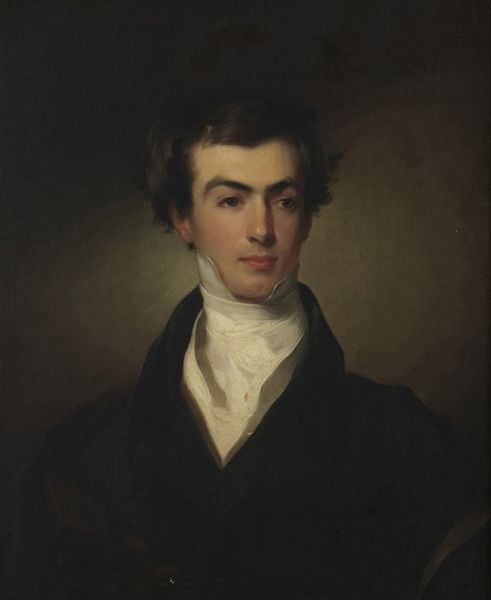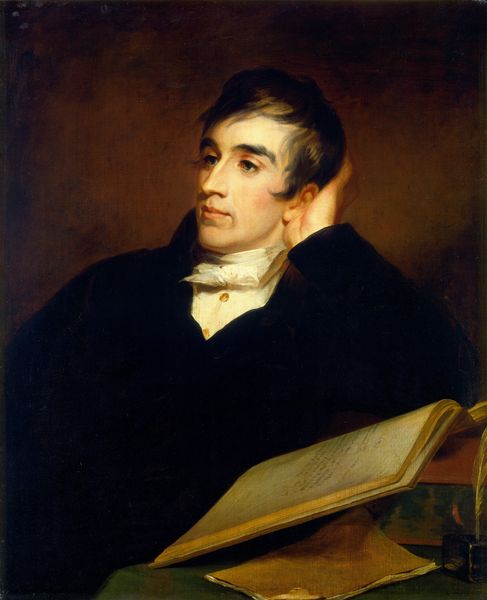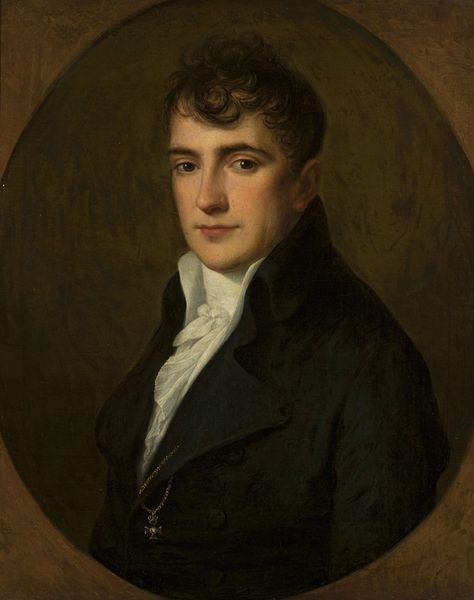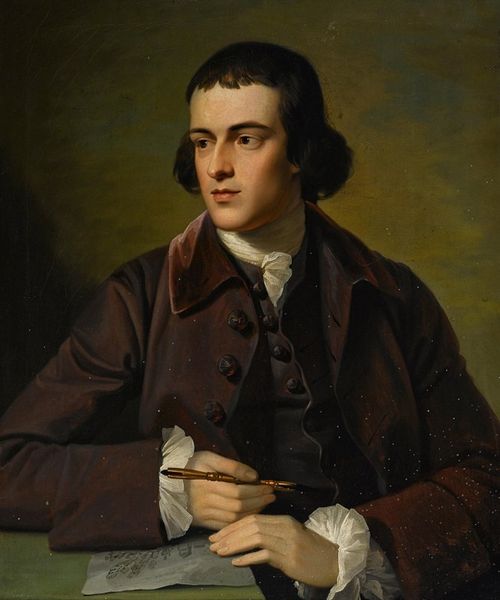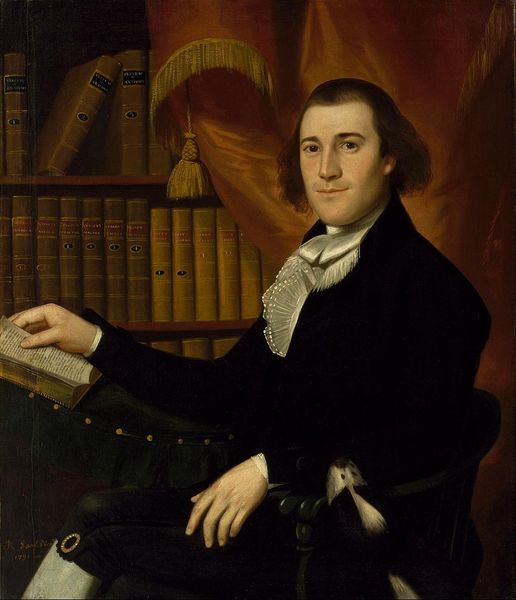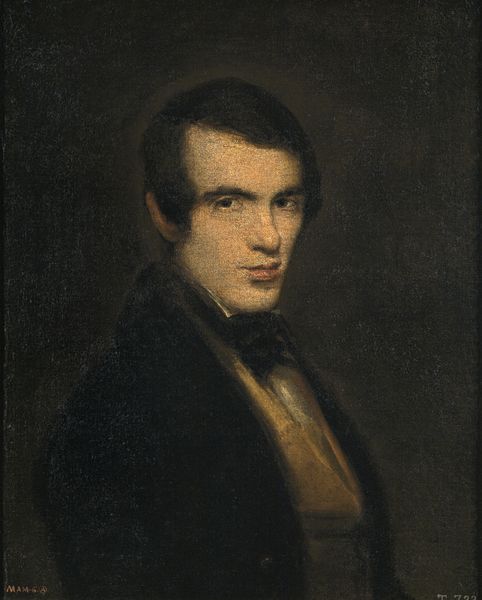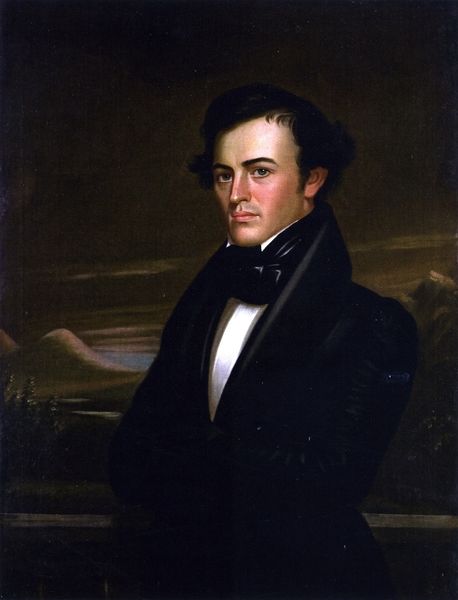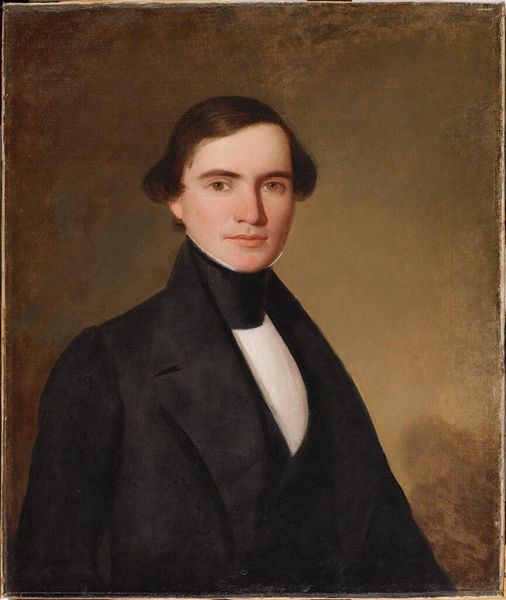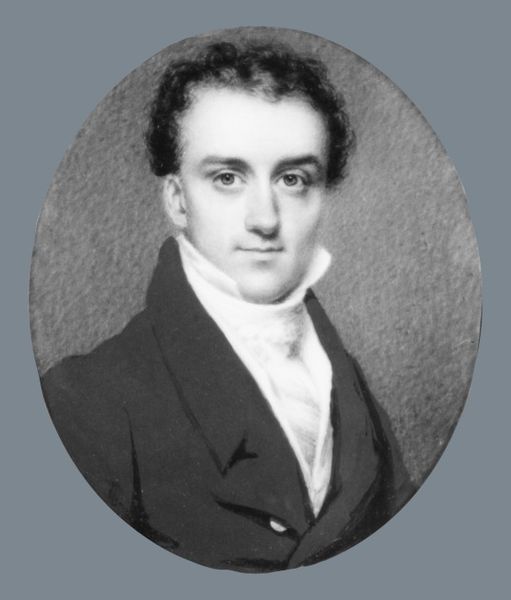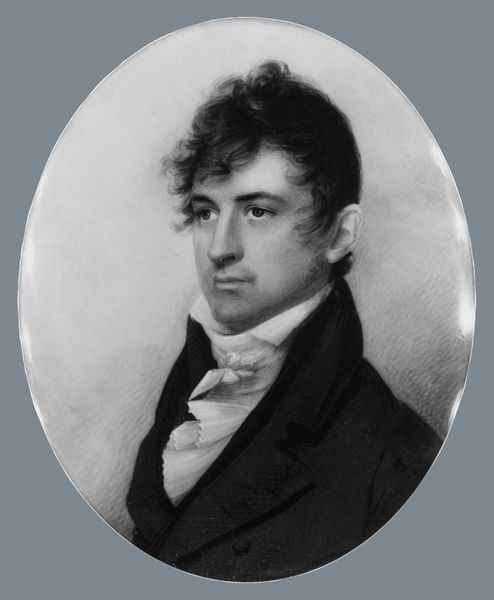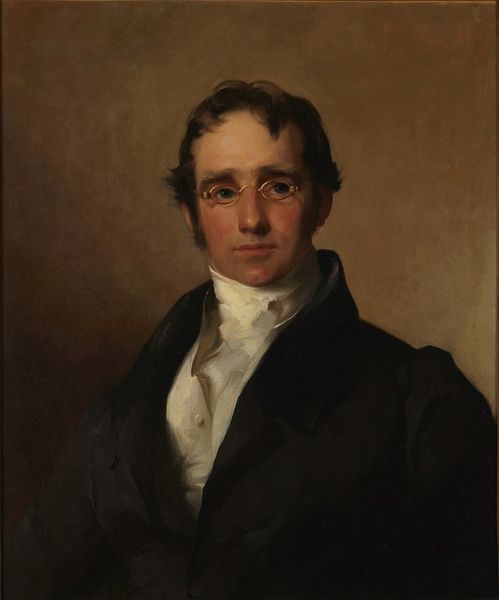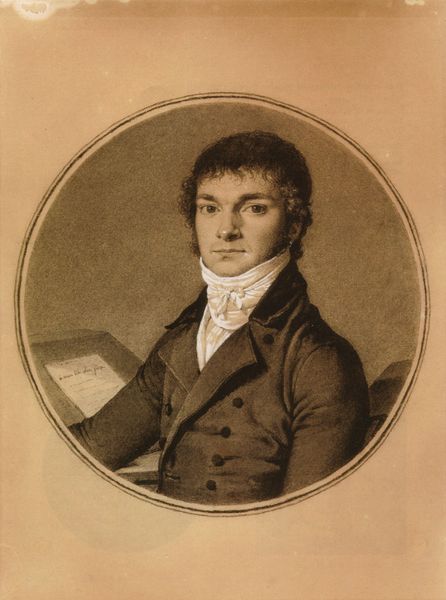
painting, oil-paint
#
portrait
#
portrait image
#
portrait
#
painting
#
oil-paint
#
portrait reference
#
portrait head and shoulder
#
romanticism
#
portrait drawing
#
history-painting
#
facial portrait
#
academic-art
#
portrait art
#
fine art portrait
#
celebrity portrait
#
digital portrait
Dimensions: overall: 76.7 x 63.7 cm (30 3/16 x 25 1/16 in.) framed: 105.4 x 92.1 x 8.3 cm (41 1/2 x 36 1/4 x 3 1/4 in.)
Copyright: National Gallery of Art: CC0 1.0
Curator: Thomas Sully's portrait of Thomas Alston, created in 1826 using oil paint, captures a moment of poised contemplation. Editor: The first thing that strikes me is this air of… wistful languor. He looks like he’s about to deliver a soliloquy from a plush drawing-room stage. There is something about how Alston rests his head against his hand that suggests great consideration. Curator: Exactly, and look at the artist's deliberate use of chiaroscuro to enhance the figure's elegant, if slightly melancholic, features. It reflects the prevailing Romantic sensibilities, prioritizing emotional intensity. Editor: It’s intriguing to me, looking at the materiality itself – this painting had to be commissioned. What kind of social capital did Alston possess to have himself rendered in oil? And I wonder, where exactly was the canvas sourced, how much did Sully charge? The very act of artistic production here speaks volumes about status, doesn't it? Curator: It undoubtedly does. And beyond the material value, observe the subtle dynamism Sully creates. Alston isn't just posing; he appears caught in a fleeting moment of reflection, his gaze suggesting depth. He is actively considering his world and the artist masterfully evokes this sense of active introspection. Editor: Thinking about the means of production, though: Sully and Alston, in creating this image, also fashioned a product, an object of display. Were the pigments local or imported? Was it destined for a private drawing room or a public gallery, engaging viewers and embedding it within a network of social and aesthetic relations? The object's life extends well beyond the sitting. Curator: True. And yet, returning to the artistic vision, the portrait transcends simple documentation, entering a realm of imaginative interpretation, evoking that transient, romantic beauty. The brushstrokes dance across the canvas in ways that bring this beautiful scene to life. Editor: Precisely. The convergence of both the means and motive reveals hidden stories. I think both perspectives deepen our understanding of the time in which this oil-based painting was crafted, acquired, and displayed as well. Thank you. Curator: And thank you for that incisive point of view and fresh context for a very beautiful painting.
Comments
No comments
Be the first to comment and join the conversation on the ultimate creative platform.

